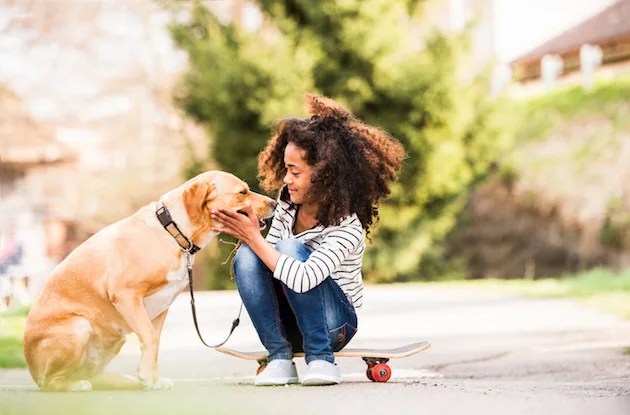In today’s globalized world, it’s more important than ever to raise kids who respect diversity and accept others who are different than them. Here are steps parents can take to make cross-cultural understanding second nature to their kids–and themselves.
We live in a rapidly globalizing world. That means the ability to meaningfully engage with people from other cultures—once seen as a “nice to have” quality that revealed your level of sophistication and, perhaps, political correctness—is fast becoming a “must-have.” Chances are, your kids go to school with and will one day work with people from a dizzying array of races, beliefs, and backgrounds. If they can connect across these cultural differences, they’ll be far more likely to lead successful lives, says Janet Penn, executive director of Youth LEAD, a nonprofit organization based in Massachusetts.
“Feeling comfortable with those who are different—and more to the point, being able to have tough conversations about these differences—has become a critical life skill,” Penn says. “You can’t collaborate and innovate if you can’t get beyond surface relationships. You must be able to ‘agree to disagree’ while still respecting the other person and learning something new. These are tough skills that are typically not taught in school.”
Left to our own devices, most of us make one of three choices, Penn says. One, we choose to talk only with like-minded people. Two, we argue; we try to convince a person with a different point of view that he or she is wrong. Three, we simply don’t talk about the elephant in the room—it’s too hot to touch. There is another option, but it requires a dedicated effort and the opportunity to practice the appropriate skills—and that’s where most people fall short.
“Most of us have paid lip service to the benefits of cross-cultural understanding and the notion that ‘diversity is desirable,’” reflects Penn. “But this feel-good sentiment does little to effect real change in behavior. What kids need is exposure and practice—exposure to people from other cultures and practice in talking about sensitive issues without getting upset or combative. It’s the only way to get comfortable with having meaningful interactions with those who are different.”
A major new web initiative by Harvard’s Pluralism Project, America’s Interfaith Infrastructure Study, a pilot initiative of The Pluralism Project, documents the growth of interfaith initiatives across the U.S. and considers the implications of our multi-religious reality for citizenship and leadership today and in the future.
Clearly, cross-cultural understanding is a hot topic. So how can we as parents foster it in our own kids? Penn says it’s really about seizing “teachable moments” as they arise and also about creating more of those opportunities for our kids. For example:
First, strive to get out of your own “comfort zone.”
When kids see that you socialize only with others just like you, they will question your credibility. You don’t have to go to absurd lengths to create your own rainbow coalition of friends—that will seem fake and contrived—but kids need to see that you’re open minded and not “rigid.” Still, there’s nothing wrong with expanding your social circle a little. As your child learns, you’ll learn also. This is a journey you undertake together.
“Be curious!” Penn says. “Reach out and introduce yourself to someone new. Ask questions. Don’t be afraid to mispronounce their name. You might make an effort to befriend the Muslim parent of your child’s classmate or the Jewish parent of his soccer teammate. Let the relationship unfold naturally and definitely accept any invitations, especially those that include the kids.”
Don’t avoid controversial topics.
When a subject that makes you uncomfortable comes up in conversation, especially with someone who holds a different viewpoint, don’t do the subject-change tango. Instead, model the “healthy” way to disagree. Here are just a few techniques Youth LEAD uses in its dialogue training classes:
1. Use “I” statements to personalize thoughts and feelings. Let’s say, for example, that you get pulled into a discussion with someone who adamantly opposes gay individuals serving in the military. You could say: “I have a brother who’s gay. I find it upsetting when I hear inflammatory statements about gay people joining the military. I have great respect for anyone who puts his or her life on the line for our country.” Using “I” statements prevents the conversation from becoming accusatory.
2. Ask the right questions. This will help you get to the heart of others’ core principles and beliefs. If we can learn to ask questions out of genuine interest in another person, it can turn a conversation in a new direction. For example, you might ask, “Do you have a personal connection to this topic?” or “What about your life experience has influenced your beliefs?”
3. Remain silent long enough to listen. In order to benefit from the questions mentioned above, you have to listen deeply to the other person’s answers. Remain silent. Listen rather than thinking about the next thing you’re going to say. When you are a better listener, you can ask better questions. Eventually the other person comes to see that you do care about what they have to say. You might not be able to reach a complete agreement, but you can reach mutual respect.
“These tips work with all sorts of controversial issues, not just in ‘diversity’ situations,” says Penn. “Use them whenever you have any sort of disagreement with anyone, about any subject.”??
Watch the news with your children. When you see a story that centers on a cultural issue, discuss it.
Ask kids what they know about Islam or Passover or the African-American community. Engage them in discussions. Being active observers of the news is a good way to gauge kids’ attitudes and those of their friends and to share your own.
“This is no substitute for face-to-face interaction with people from other cultures, of course, but it is a good starting point,” Penn says. “We tend to live in our own insulated little bubbles, and the news serves as our window on the larger world. Knowing what the issues are opens the door to conversations that can result in deeper understanding and acceptance of other cultures.”
If you witness an episode of cultural or racial insensitivity, take a stand.
Don’t stand quietly by and listen to a disparaging remark aimed at a woman wearing a hijab, for instance. You might gently say to the perpetrator, “Imagine how it would feel if the shoe were on the other foot. Perhaps you don’t know how hurtful your words can be.” This is the right thing to do and it’s especially valuable if kids are present. “If you don’t feel safe confronting a rude or even hostile person, you can certainly offer a kind word to the recipient of the remark,” Penn says. “If it seems relevant, turn the event into a learning experience. ‘I’m sorry that man was so insensitive. I can see that your feelings are hurt and I want you to know that not everyone in our city has that kind of attitude. Can you tell me a little about your faith?’”
Seek out opportunities to take kids on a “faith” field trip.
Attending a worship service of a faith different from your own can be a tremendously educational and enriching experience. Of course, it’s not always advisable to “drop in” at a place of worship if you don’t know anyone. However, if you have a personal relationship with someone from a different tradition, you might ask if you and your family can be his/her guest. That way you can learn about what’s going on and be comfortable walking in the door.
If finances allow, make plans to visit another country on vacation.
This can be an amazing learning experience for you and your kids, and traveling abroad can be surprisingly affordable if you do your research. However, if you determine this kind of adventure is out of your price range, visiting an ethnic section of a nearby city can be a good substitute. Try out restaurants, shops, street festivals, etc. The idea is to immerse kids in culturally diverse environments. There may even be an opportunity to turn this into a school project, perhaps for extra credit.
“You want to get kids comfortable with the reality that there are many different ways to live and that all have their own unique beauty,” says Penn. “As they explore the sights and sounds and flavors of a different culture, they will find that people are alike in so many ways—they all respond to a smile, a friendly greeting, and a kind word.”
Host a foreign exchange student.
This is another good way to expose kids to the customs, traditions, languages, and culture of another country. Having someone in your home 24/7 almost necessitates a certain “depth” to your relationship—after all, this is a person you and your kids will laugh with, learn with, and hopefully hold meaningful conversations with. Lifelong friendships can grow from these experiences.
Encourage kids to join organizations that bring different cultures together to interact and learn from each other.
Youth LEAD is just one of many organizations that bring young people from different cultures together for mutual education and meaningful interaction. As mentioned earlier, Harvard’s Pluralism Project identified interfaith groups in cities across America, and there are many youth leadership programs that foster understanding across differences.
“Look to see what your community has to offer,” advises Penn. “I would urge you to look for an organization that moves beyond educational and social purposes.”
Scan newspapers and community calendars for cultural and multicultural events.
You might be surprised at what’s out there. Many communities, nonprofit organizations, worship centers, and schools host events that are free or open to families at a very low cost. Whether it’s a Japanese cherry blossom festival, a speaking presentation by an African dignitary, an Islamic art exhibit, or an interfaith gathering, you’ll likely find an event that your entire family can enjoy.
For hundreds of great cultural and kid-friendly events in the NYC area, head to our full, searchable calendar of events.
“It’s human nature to get stuck in a comfortable rut,” says Penn. “Change takes effort and sometimes it means confronting our own prejudices and assumptions. Yet taking action to expose kids to a broader worldview is always worth doing, not only for them but for us as well. What many parents find surprising when they take this journey is not how well their kids respond, but how much richer and more interesting their own lives become.”
Also see:
Young Students Get a Lesson on Special Needs and Tolerance
How to Avoid Gender Stereotypes in Child Raising
What to Do When Your Child is the Bully





















